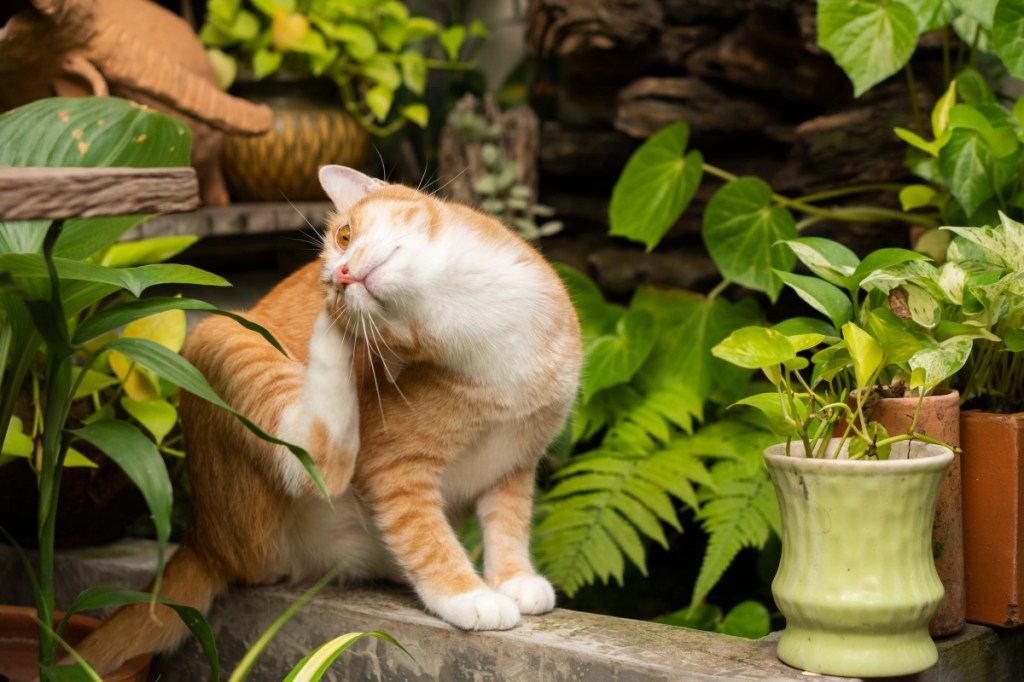Table of Contents
Whether you are a family with a cat welcoming a new child to the family, or a family with young children welcoming a new cat, introducing cats and children must be handled cautiously.
Raising children among pets can be a very positive experience, because it can teach them essential values. Children learn to care for something (or someone), take responsibility, and learn about loyalty and affection. So even though the early introductions may require careful attention, the benefits will last a lifetime. There’s also research showing that cats help strengthen your immune system, as well as prevent allergies in children.
Why do I need to carefully introduce babies and toddlers?
Preparing for a child is hectic enough, but don’t forget to think about your feline friend. There are several important reasons to prepare your cat for big changes.
- Cats are creatures of habit and don’t like change. Anything different will inspire a lot of curiosity and potentially fear, so you have to make introductions gradually.
- From a cat’s perspective, babies and toddlers are strange. Children are much smaller than adults, and a cat thinks they’re very different: they smell different and sound different. So, they naturally take some getting used to.
- When cats feel unsettled, they might lash out or hide. You don’t want your cat trying to intimidate (i.e. hiss and scratch) your kids. And you don’t want them to hide all the time either. That’s why it’s best to help them to adjust gently.
Ideally, you’ll want to prepare your house for a few months before the introduction.
The earlier you start your preparations, the smoother your adjustment period will be. Here are a few things to keep in mind to help prepare your cat before the child comes.
Keep your cat inside while you’re pregnant. Cats that spend time outside are at risk for getting the feline parasitic infection toxoplasmosis as well as other possible contaminants. These can be harmful to humans, particularly when you’re pregnant, so it’s important to keep your kitty indoors. It’s also important to avoid changing the litter box when you’re pregnant, as an extra barrier from being contaminated.
Help ease your cat into the sights and sounds of babies before your new arrival. Some cats dislike change, so the earlier you introduce some of the elements of having a baby, the better. Play tapes or videos with baby sounds. Put baby lotion on your hands when you interact with your cat. When you’re introducing these new elements, make sure to pet and play with your cat, so they develop positive associations with these new stimuli. If you’re welcoming a new cat into your family, make sure to teach your young children about how to handle a cat before it arrives.
Try to change up your kitty’s routines slowly, ideally over 1 to 2 months. If you need to move the litter box, try to move it only a few inches at a time, so your cat doesn’t get confused. Similarly, if your cat needs to sleep in a new spot or adjust to a new feeding schedule, adjust it gradually. That way, your cat has already acclimated to a new routine when you introduce a new person to the world. Routines for children are similar — if a new cat brings change, try to help them adjust slowly.
Try to keep the cat out of the baby’s things. Bassinets probably look so cozy to your cat! As do cribs, blankets, and even changing tables. But you don’t want your cat to start thinking that these are new places for it to hang out, so keep a baby gate up or close the door, so your cat doesn’t make the baby’s room its own. And if you already have kids, try to establish an area for the cat and teach your kids to respect it.
The first interaction:
The first interaction will be very important. Take things slow and follow these simple steps to make sure both cat and child feel comfortable.
- Make the introductions slowly. Choose a quiet, comfortable room and pet or play with your cat, so he or she is happy. Then introduce the child. Introduce any other people one at a time, so your cat isn’t overwhelmed.
- If your child is a toddler, encourage he or she to hold out a finger and let the kitty smell it. Cats need to explore new things, so offering it a non-threatening way to sniff for a moment is very important.
- Leave the cat alone with a blanket or onesie that smells like the baby. Let it smell or rub on it so it gets used to the smell of the baby.
- Make interactions with the child a regular thing. Don’t make it a big deal; show your cat that this new human is normal.
- Praise your cat when they behave in a calm, confident manner around the little ones. Give lots of treats and calm attention when your cat behaves the way you want.
- When the child cries, play a game with your cat. Crying can be a scary sound, so it can help if your cat associates the sound with something positive. As long as the baby is taken care of while crying, play your cat’s favorite game while the sound is going on.
As babies grow into toddlers, you’ll want to make sure they learn to interact with your cat properly.
Make sure playtime stays gentle. To children, pets may look like a large stuffed toy, and they might try to play with it as such. Teach them to always be careful and gentle with the cat, so that they don’t get too rough. You’ll also want to teach them how to handle the cat — that they should always be picked up carefully, supporting its hindquarters, and never by the scruff of the neck.
Teach your children the difference between playtime and teasing. You don’t want your kids teasing your cat. Not only is it cruel, but the kitty can become frustrated.
Be a role model and take your kids along as you care for your cat. You’ll want to wait until your kids are a bit older to let them take over any of the duties, but you can start by making it fun. Keep them with you while you give the cat food and water. Show them how fun it can be to show your cat proper attention and play with it.
Teach them the importance of closing the door. This may seem simple, but it’s so important. Indoor cats can get lost or injured after escaping through an open door, so make sure your kids get in the habit of shutting doors early.
Safety is of course very important, so keep these health and safety concerns in mind.
Cats can be dangerous when they feel scared or cornered. Don’t forget that cats have sharp claws and teeth. Teaching your kids to be kind and gentle with the cat from an early age is essential to preventing any aggression. Along with that, teach your child not to put their face directly up to the cat’s face — scratches to the face and neck can be the most dangerous.
Cats can carry disease, so you need to be careful. Cats carry diseases like salmonella, toxoplasmosis, cat scratch disease, parasites, and fleas, and all of these can be a higher risk for your children than for you. But a few simple precautions will keep you and your kids safe.
- Keep your cat indoors, so that it’s less likely to get infectious diseases or injury.
- Wash your hands after handling your cat.
- Keep young children away from the litter box.
- Scoop the litter box daily, and disinfect it with detergent and hot water regularly.
- Take your cat to the vet regularly, to ensure good health.
Many new parents of both children and pets worry that their kids might develop asthma or allergies. Research suggests that exposing young children to furry animals can actually help reduce their chances of developing pet allergies in later childhood or adulthood.
So, after making these preparations, you can feel confident that you’ll have a home filled with both happy kids and happy animals. Living together will make everyone’s life richer, happier, and full of more wonderful purrs and snuggles.
Want to learn more about your kitten? Check out Health Benefits of Owning Pets, How to Deal With Jealous Cat Behavior, and Calming a Cat With Gravol at Cuteness.com!
This article is provided by Cuteness—the go-to destination for passionate pet parents. Cuteness has answers to all of your health, training, and behavior questions – as well as the cutest, funniest, and most inspiring pet stories from all over the world.







